Article and photos by Summer Nemeth
On Wednesday, July 14, 2010, I received a call from Keona Mark, a cultural monitor with Garcia & Associates (GANDA) who has been working up at Lihue. She invited me to attend a site visit that Saturday (7/17) to see some ki’i pohaku (petroglyph rocks) that are threatened by future Stryker training in the BAX at Schofield Barracks. She had told me that the invitation was limited to 10 people. I asked if others could attend, and she told me I was the last person that they had selected to go.
As soon as I got the call, I began to call others who were on the previous visit to address the desecration of ‘iwi kupuna (ancestral remains) in the “borrow pit” located in the same area (BAX). No one that I talked with received an invitation. That evening, I attended a Wahiawa Hawaiian Civic Club (WHCC) meeting, and asked if anyone had been invited the Saturday site visit. Uncle Tom Lenchanko had received a call from Keona, and had shared his mana’o on the ki’i pohaku issue with her. He said that the sites should not be moved. I was disappointed to learn that Jo-Lin Kalimapau, historian of the WHCC, was not asked to attend, as I was told by Keona that she could not make the access.
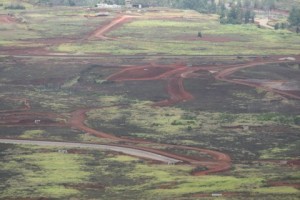
At center of photo, ‘Borrow Pit’ in BAX, where ʻiwi kupuna were desecrated during SBCT construction.
I had also put in a call to Kamoa Quitevis, former cultural monitor at Lihue and Kahuku, who now works for OHA. He was not informed about this visit, nor was he invited to attend, but he was able to share with me his mana’o on the issue. Years ago, Kamoa, while working at Lihue, had recommended to the Army that these ki’i pohaku remain in place.
On Saturday morning, we drove to the training area and were escorted to a temporary structure where we were briefed on the site visit (I have recorded some video on the briefing that I will share with everyone). I had asked Keona Mark why those of us in attendance were selected to represent the community. She told us that she wanted to invite “open-minded” people to share their manaʻo on the protection of sites that would be impacted in the BAX. I was disappointed that not all 10 invitees were in attendance, and also disappointed that some cultural monitors, who were given an assignment to invite people from their communities, chose to bring their ohana instead. I felt that this was a sign that they were not communicating with others in the community who should have been informed about the situation at Lihue (including plaintiffs in lawsuits relating to Stryker expansion, those who had given testimony on the SBCT EIS, and those with ties to the ʻaina).
At the briefing we were told that this site visit was a response to a consultation letter dated September of 2006. According to Laura Gilda of GANDA, the consultation was put on hold because they were unable to clear ordnance at Lihue due to an injunction which halted all work in the project area (I will include the letter at the end of this reflection). I then realized then that my attendance on this “site visit” was actually part of the Army’s checklist to meet requirements for Section 106 of the National Historic Preservation Act (NHPA).
We were told that the Army needed feedback from the community on the protection of kiʻi pohaku that will be impacted by SBCT training (some of which are very near to targets where 50cal ammunition would be fired upon).
There were several options that we would need to consider:
1) Leaving the pohaku in place without protection.
2) Leaving pohaku in place with protection (options included soil barrier, sandbags – which would have to be replaced regularly to ensure protection, metal coffin – metal box covering pohaku which could be a hazard to soldiers in the training area, or bury pohaku in place).
3) Moving pohaku outside of the BAX, or above firebreak road. At the end of the tour, we were taken to one of the suggested areas that cultural monitors felt kiʻi pohaku should be moved. We could not enter into this area because it had not been cleared of UXO.
Throughout the consultation we were escorted to different sites on the BAX. We went first to Haleʻauʻau Heiau, but could only stand outside the buffer and peer in. There is unexploded ordnance on this heiau, and further access was considered too dangerous.
There were a few other kiʻi pohaku that we could not see close up because of UXO issues. Instead, cultural monitors would walk down to the area and point out where the petroglyphs were located. We were shown poor quality photographs of the carvings along with sketches and written descriptions (please see the attached packets below).
We were also told that these kiʻi pohaku were aligned with Haleʻauʻau, and it looked like the alignment was also in the direction of Kukaniloko. There was a lot of discussion between those on the tour during the consultation process. Many felt it would be best to move the pohaku out of harm’s way, although I felt that moving the pohaku would permanently disconnect us from discovering the kaona our ancestors had intended for us to learn. I was extremely disappointed to learn that several pohaku and artifacts had already been moved from their original locations without community consultation.
In my short visit to Lihue, I was surprised that these artifacts and cultural sites still exist after almost 100 years of military training. What we were able to see today was just a handful of kiʻi pohaku and Haleʻauʻau Heiau, but according to the map we were shown at the beginning of the day, there is much, much more that we did not have clearance to see.
The Army wants us to see these sites and artifacts as separate entities, rather than parts of a larger complex within a Traditional Cultural Property.
So the questions remain: Was the SBCT EIS really complete if protections for this sacred area and all of its cultural resources were not included? Has the Army completed a thorough cultural survey of Lihue, Kahuku, Mokuleia and Makua? If surveys were complete, why were these results not included in the EIS before a decision was made to transform the 25th Infantry Division in Hawaii to an Stryker Brigade Combat Team? If thorough surveys were not complete, why were they allowed to continue construction of the BAX and other firing ranges? Why was this consultation visit limited to 10 people, and why were cultural monitors allowed to hand-pick community representatives rather than inviting those who have addressed concerns for cultural sites in the past? What is the real reason behind delaying this consultation process for 4 years?
This community consultation process is serious – the Army has been able to avoid reaching out to the larger community thus far, and we need to hold them accountable for what they have done and continue to do to our wahi pana!
In order to force them to consult with more of us, we need more kanaka maoli to specifically request to become concerned parties to the section 106 consultation relating to cultural sites in Lihue. I urge everyone to demand access to see Lihue! It is important for you to see this desecration with your own eyes, and to connect with this ʻaina before the Army attempts to obliterate the physical proof of our existence here. To request section 106 consultation status, or to demand access, contact:
Dr. Laurie J. Lucking
Chief, Cultural Resources Section
Environmental Division
Directorate of Public Works
US Army Garrison, Hawaii
Phone: 808-656-6790
Fax: 808-656-1039
Email: laurie.lucking@us.army.mil
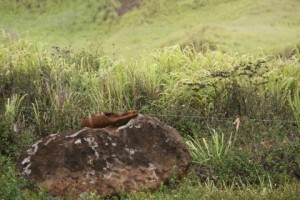
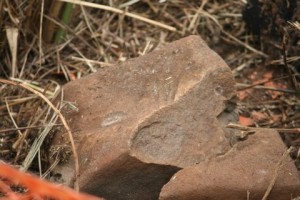
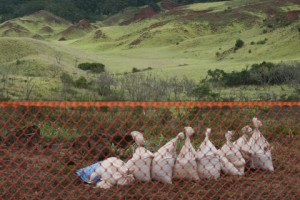
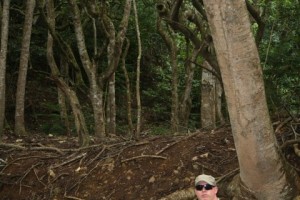
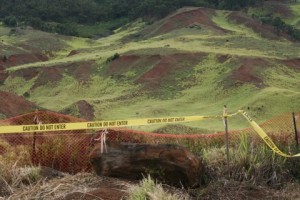
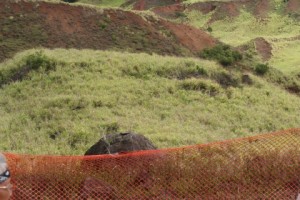
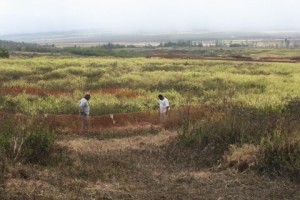
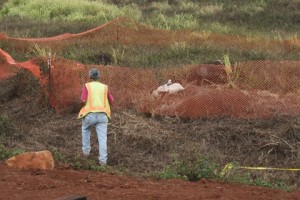
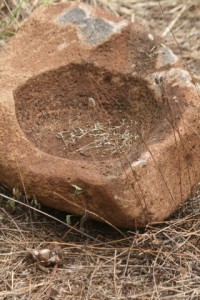
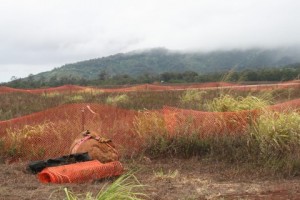
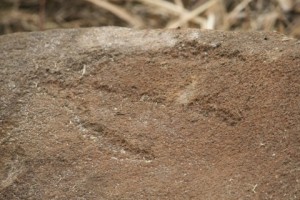
Leave a Reply